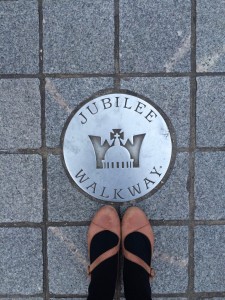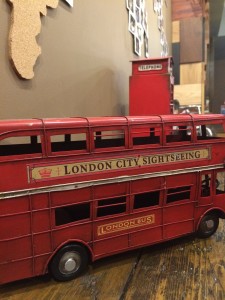
Today was a walking tour. Led by our generous and adorable tour guide, it was an incredible opportunity to see such a large portion of the city in such a comprehensive way. Walking a staggering 12 miles and taking over 27,000 steps, London feels more graspable and tangible to me than ever before. However, this amount of coverage inherently takes time. Through the hurriedness of our demanding day, I began to mindlessly notice an interesting behavior amongst the group. This behavior, which existed amongst myself as well, became incredibly interesting to me. We are fervent picture takers. Whether for needing material to put on blogs, for uploading to social media or for sending as a “miss you” to mom, we maintain an incredible compulsivity to capture a moment and remember a time and place. How does photography relate to tourism?
Art philosopher and writer Susan Sontag famously coined “to collect photographs is to collect the world.” In her famous essay In Plato’s Cave, she beautifully presents us with a metaphor. She argues for the imprisonment of humanity within Plato’s Cave, a cave in which the shadows cast within the cave sourced from subjects outside of the cave are mistaken for reality. Sontag compares the allegory of these shadows to photos: they are not real. Speaking to the compulsivity within us to photograph, she writes “photographs will offer indisputable evidence that the trip was made, that the program was carried out, that fun was had.” A way of certifying experience, taking photographs is also a way of refusing it—by limiting experience into an image, a souvenir. We want to be able to go back and experience our experience over again through looking at the digitalization of a flattened world unconcerned with us. Photography has become one of the principal devices for experiencing something, for giving an appearance of participation. Fittingly, “ In end-of-the-century London, Samuel Butler complained that “there is a photographer in every bush, going about like a roaring lion seeking whom he may devour.” The photographer is now charging real beasts, beleaguered and too rare to kill. Guns have metamorphosed into cameras in this earnest comedy, the ecology safari, because nature has ceased to be what it always had been–what people needed protection from. Now nature–tamed, endangered, mortal–needs to be protected from people. When we are afraid, we shoot. But when we are nostalgic, we take pictures. Most tourists feel compelled to put the camera between themselves and whatever is remarkable that they encounter.

Thinking about the metaphors for photography and film: to load, to aim, to shoot, to take. Also, it’s the queen. Found on walk by Hyde Park
Yes, it can get rather philosophical. I think that one can’t leave London without a “Storage Full” notification, but these ideas are something to just keep in mind. When traveling to a place with the intentions of intimacy and cultural immersion, just remember the physical and psychological separation that can exist through the compulsive need to record.
Above all, soak in your experiences, live in the moment and let places inspire you.
Goodnight little birds
















